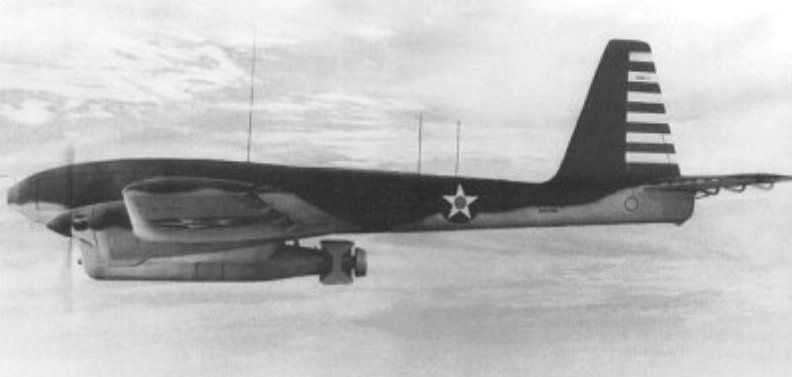TDR-1 Edna

In World War II, the Interstate Aircraft Company developed the TDR-1 "Edna," a twin engine remotely operated aircraft capable of carrying a 1,000 pound bomb or torpedo for the U.S. Navy. The drones served under the Navy program code-named "Operation Option." Originally envisioned as a carrier-based anti-ship weapon, the TDR-1 could be controlled up to seven miles away from the ground or a chase aircraft - the TBM-1C Avenger. The early unmanned combat air vehicle was guided using an RCA television camera. The wooden plane contained a cockpit which was manned during ferrying flights, but covered by a fairing for unmanned operations. They were powered with two 200 hp flat six cylinder Lycoming engines.
TDR-1s were deployed to the South Pacific with the Special Air Task Force in 1944 and destroyed a number of Japanese fixed targets. Of the 50 deployed drones, 37 reached their target areas and 21 hit their designated targets.
See also TDN-1.
Link to excellent color footage of TDR-1 test missions in the Pacific from the PBS series History Detectives.
comments powered by Disqus